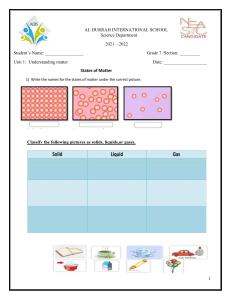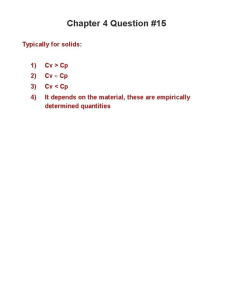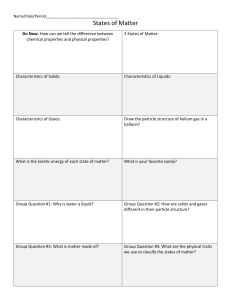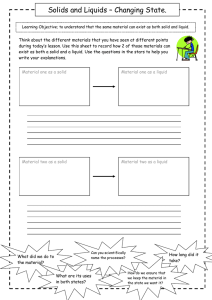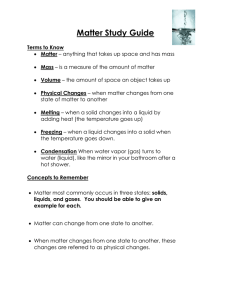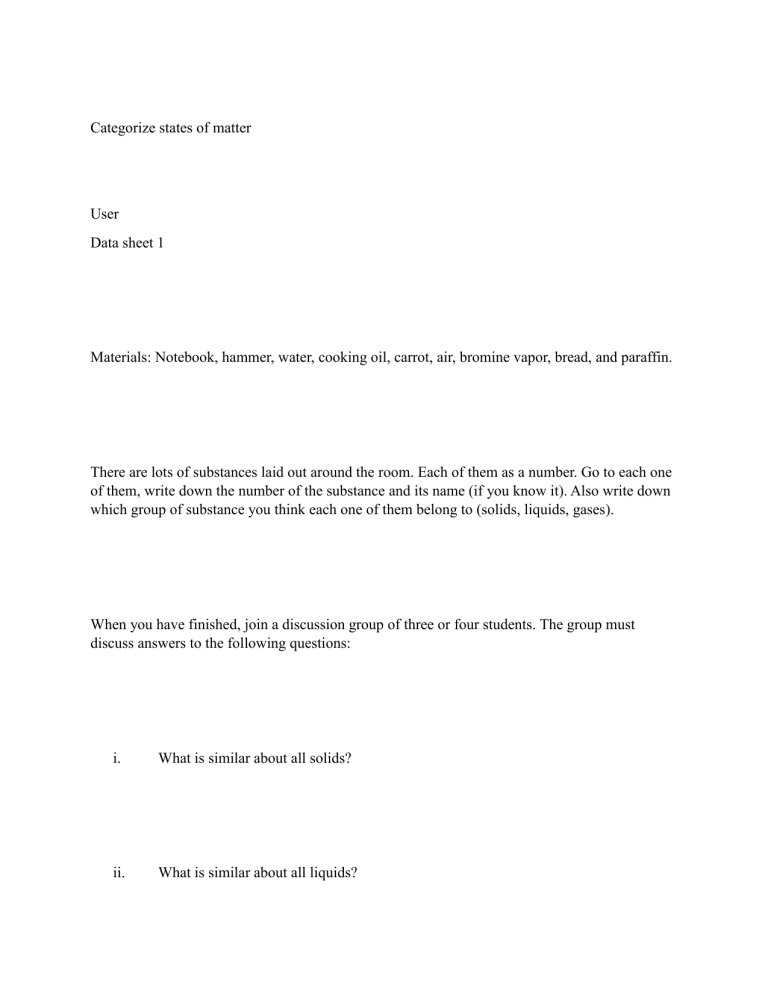
Categorize states of matter User Data sheet 1 Materials: Notebook, hammer, water, cooking oil, carrot, air, bromine vapor, bread, and paraffin. There are lots of substances laid out around the room. Each of them as a number. Go to each one of them, write down the number of the substance and its name (if you know it). Also write down which group of substance you think each one of them belong to (solids, liquids, gases). When you have finished, join a discussion group of three or four students. The group must discuss answers to the following questions: i. What is similar about all solids? ii. What is similar about all liquids? What is similar about all gases? Datasheet ends here. From the data sheet use it to answer the following questions. i. Suggest two success criteria that could be achieved with your learners using this activity. The success criteria should be in different levels of bloom’s taxonomy ii. What instructions would you give to your learners before undertaking this activity? iii. What pre-requisite knowledge and skills would you expect your learners to have in order to successfully undertake this activity? Iv . How much time would you allocate this activity in your lesson plan and explain why? i. Two success criteria that could be achieved with learners using this activity, aligned with different levels of Bloom’s Taxonomy, are as follows: Knowledge/Remembering Level: Students will be able to correctly identify and categorize the substances into their respective groups (solids, liquids, or gases). Analysis/Applying Level: Students will be able to explain the similarities and differences between solids, liquids, and gases based on their observations and understanding of the properties of these states of matter. ii. Instructions for learners before undertaking this activity: Carefully observe and examine each substance provided in the room. Write down the number and name of the substance (if known) on a piece of paper. Determine whether each substance belongs to the group of solids, liquids, or gases. Join a discussion group of three or four students to share your findings and answers to the questions. iii. Prerequisite knowledge and skills expected from learners to successfully undertake this activity: Basic understanding of the three states of matter: solids, liquids, and gases. Familiarity with the properties and characteristics of each state of matter. Ability to identify and differentiate between different substances. Basic scientific observation and recording skills. iv. The time allocated for this activity in a lesson plan would depend on various factors such as the age and prior knowledge of the students, the depth of discussion, and the level of engagement desired. However, a suitable allocation would be around 30-45 minutes. This allows enough time for students to explore and examine the substances, engage in meaningful discussions within their groups, and share their findings with the class. Additionally, it provides an opportunity for the teacher to address any misconceptions and facilitate a comprehensive understanding of the topic.
